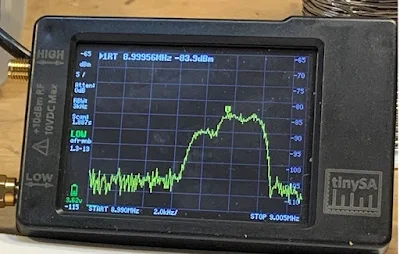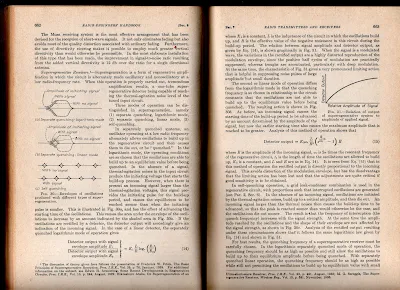Our homebrew direct-conversion receiver challenge (see below) has led to a discussion of the differences between homebrew and kits. Our intent in designing this rig was to come up with something that was simple enough to actually homebrew (that is the challenge: homebrew it!) . Building it from a kit would be something different. I like the way Charlie and Steve talk about the differences between homebrew and kits in this video. Around 33:49 Charlie mentions that after a while you just get good at building kits. Steve points out that building kits is a bit like "painting by numbers" (a great metaphor). Steve then goes on to talk about the formation in G-QRP of the "scratch-built group." Steve tells us that he has built some 84 radios. Steve talks about "the joy of building it yourself" (43:49)
Steve gives a very kind shout out to SolderSmoke at around 23:58. The references to Tony G4WIF and Ian G3ROO were also very nice. And there are many great mentions of Pete Juliano N6QW.
And remember: If you are not a member of G-QRP you are just wrong! Join here: https://www.gqrp.com/join.htm
Thanks Charlie and thanks Steve!
------------------------------------
November 13, 2024
Bill's appearance on the Ham Radio Workbench. (Bill made some overly harsh comments about radio rejuvenation, and was trying to make amends.) But now we throw down the gauntlet. WE CHALLENGE the HRWB guys to build -- to homebrew - our TJ DC RX. They will experience JOO, JVO and the elite status that comes with having built their own ham radio receiver. And if they go on to build a 10 minute transmitter, they can use it for CW contacts. Like on POTA (Thomas!)
December 13, 2024:
Bill was on Ham Radio Workbench: https://soldersmoke.blogspot.com/2024/11/bill-n2cqr-appears-as-guest-on-ham.html Our challenge to HRWB. Gauntlet thrown down... OUR CHALLENGE HAS BEEN GRACIOUSLY ACCEPTED! We now extend the challenge to the entire SolderSmoke community: Build one of these: https://hackaday.io/project/190327-high-schoolers-build-a-radio-receiver
Homebrewing is not for the faint of heart! Accept the challenge! Build stuff!















